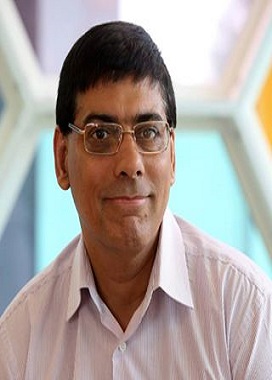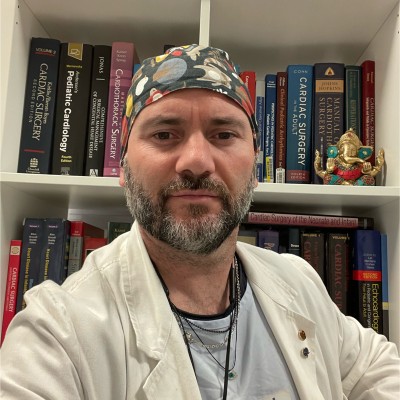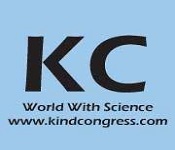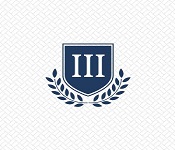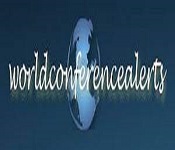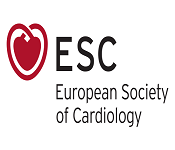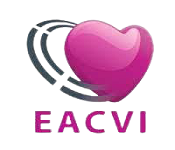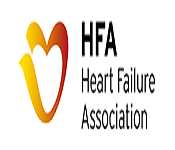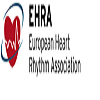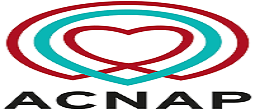Theme: Tuning the Rhythm of Cardiology
Heart Congress_2022
Heart Congress 2022 welcomes all the professionals from Medical Healthcare, Cardiologists, Surgeons, Medicine Specialists, Professors, Medical Researchers, Nurses and Nurse Practitioners, Fellow Scholars, Industrial Professionals, Physicians, Student Delegates and Exhibitors to our two-day event “11th World Heart Congress” scheduled on July 21-22, 2022 at Paris, France with a goal to empower healthcare providers.
Heart Congress 2022 with the theme “ Tuning the Rhythm of Cardiology ’’will be featuring the world class keynote talk, speakers presenting clinical studies, oral and poster presentation with interactive networking session and workshops.
The key objective of Conference is to provide a platform for all the medical professionals including students to discuss and learn about new innovations on cardiology research, clinical updates and new analysis with the cardiology and industrial experts to advance the ongoing research. The conference will focus on, Cardiovascular Disease, Risk factors and Nutrition, Catheterization and Cardiovascular Interventions, Cardiometabolic Health- Diabetes, Obesity & Metabolism, Acute Coronary Syndromes, Cardio-oncology, Geriatric Cardiology, Heart Failure and Cardiomyopathies, Cardiac Imaging, Coronary Heart Diseases, Cardiac Regeneration, Cardiac Pharmacology, Pulmonary Hypertension and Venous Thromboembolism, Interventional Cardiology and Heart Surgery, Current research on Cardiology - Future Medicine, Implantable cardioverter-defibrillator.
Why to Attend?
Heart Congress 2022 is one of the world's leading Scientific conferences to bring together globally renowned cardiology healthcare practitioners, scientists, public health experts, academics, academic scientists, industry researchers, and scholars to share ideas. You will take advantage of seminars from business experts, scientific meetings, contact with members of the business, meeting attendees, and lunch and coffee break experiences. The goal of this meeting is to promote new therapeutic ideas and examine the existing demand for the potential direction of cardiovascular medications, equipment, and diagnostics, with a greater focus on new products that will be useful across the cardiology spectrum. We expect healthcare professionals from over 100 countries to be invited.
Conference Opportunities
For Researchers and Members of the Faculty:
Speaker Presentations
Organizing Workshop
Poster Display
Hosting the symposium (4-5-member team)
For Universities, Societies & Associations:
Association Partnering
Participation in groups
Academic Partnering
Collaboration proposals
For Students and Scholars of Research:
Poster Competition (Winner will get Best Poster Award)
Young Researcher Forum ((Best Presenter YRF Award))
Group registrations
Student Attendee
For Business Delegates:
Speaker Presentations
Symposium hosting
Book Launch event
Participation of the audience
Opportunities for networking
For Product Manufacturers:
Exhibitor and Vendor booths
Opportunities for Sponsorships
Organizing Workshop
Product launch
Marketing and Networking with client
Scientific Partnering
Track 01 - Cardiovascular Disease, Risk factors and Nutrition
Cardiovascular disease (CVD) is the important cause of death in many developed countries and remains one of the major diseases strongly affected by the diet. Nutrition may affect CVD directly by contributing to the accumulation of vascular plaques and indirectly by regulating the rate of aging. Consumption of ultra-processed foods worldwide has increased substantially, studies must shown that higher consumption of ultra-processed foods was related with higher risks of cardiovascular, coronary heart, and cerebrovascular diseases. Recent study originate that eating more plant-based foods reduces the risk of heart failure by 40%, while another one found that a vegetarian diet cuts the risk of heart disease death.
- Atherosclerosis and Hypertension affected by diet
- Nutrients and their impact on cardiovascular disease
- Dietary Cholesterol intake
- Obesity associated with cardiovascular disease
Track 02 - Catheterization and Cardiovascular Interventions
It deals with the catheter-based treatment of systemic heart disorders. Cardiac catheterization is a procedure to test the muscles of the heart, valves, or arteries of the coronary (heart). Into a large blood vessel that leads to the heart, a thin , hollow tube called a catheter is inserted. Some procedures for heart failure are conducted using cardiac catheterization, such as coronary angioplasty and coronary stenting. The main advantages of using the interventional cardiology or radiology method are the avoidance of the scars and pain, and long post-operative recovery.
- Risks of cardiac catheterization
- Current research on effective procedures
Track 03 - Cardiometabolic Health- Diabetes, Obesity & Metabolism
Cardiometabolic health with type 2 diabetes and metabolic syndrome, includes cardiovascular and metabolic disorders. Overweight / obesity, high blood pressure that can be modified by diet and lifestyle decisions are the risk factors. A significant factor in heart disease is obesity. This is a dangerous condition where a person is at elevated risk of heart failure and stroke because their heart does not pump enough blood to meet the needs of their body. By controlling the levels of blood glucose, blood pressure , and blood cholesterol, one can reduce the risk. The same issue can cause stroke and coronary heart disease-atherosclerosis.
- Metabolic derangements associated with obesity
- Cardiac complications of diabetes and obesity
- Endocrinal and Hormonal Obesity
- Metabolic health
Track 04 - Acute Coronary Syndromes
Acute coronary syndrome (ACS) is a syndrome generated by decreased blood flow to the coronary artery (set of signs and symptoms) so that part of the heart muscle does not function properly or dies. Chest pain, frequently radiating to the left shoulder or jaw angle, crushing, central, and associated with nausea and sweating, is the most common symptom. Many people , particularly women, older patients and patients with diabetes mellitus have symptoms other than chest pain.
Three clinical symptoms, named after the presence of an electrocardiogram (ECG), are usually associated with acute coronary syndrome: ST elevation myocardial infarction (STEMI, 30%) and non-ST elevation myocardial infarction (NSTEMI, 25%) or unstable angina (38%). There can be many differences as to which types of acute coronary syndrome are known as myocardial infarction ( MI).
Track 05 - Cardio-oncology
In many parts of the world, cancer and cardiovascular disease are the leading causes of death and the intersection of heart complications in cancer-treated patients is cardio-oncology. There are many explanations for both diseases emerging in the same patient. Coronary artery disease ( CAD) and cancer risk factors include age, use of tobacco and obesity. Other factors may be the effects of radiation and chemotherapy on long-term malignancy patients. These therapies have a direct effect on the heart, which involves surgical correction in some cases. Malignancy can also occur after a coronary artery bypass graft (CABG) during long-term follow-up. The increase of medical facilities also makes it more likely that it can detect heart disease and treatable cancer.
- Atrial myxoma, tricuspid stenosis
- Cardiac neoplasm, pulmonary chondroma
- Carney complex, LAMB syndrome
- Prevention of chemotherapy-induced cardiac dysfunction
- Cancer and Heart
- Benign cardiac tumors, cardiac fibroma
Track 06 - Geriatric Cardiology
The branch of cardiology and geriatric medicine that deals with cardiovascular problems in the elderly is cardiogeriatrics, or geriatric cardiology.
In elderly people, cardiac conditions such as coronary heart disease, including myocardial infarction, heart failure, cardiomyopathy, and arrhythmias such as atrial fibrillation are normal and a significant cause of death. In elderly people, vascular diseases such as atherosclerosis and peripheral arterial disease cause severe morbidity and mortality.
Track 07 - Heart Failure and Cardiomyopathies
Heart failure occurs when the heart muscle does not pump blood as effectively as it can, and is sometimes recognised as congestive heart failure. Some diseases, such as tapered heart arteries (coronary artery disease) or high blood pressure, ultimately make the heart too sluggish to pump. It is not possible to cure all problems that lead to heart failure, but therapies can improve the signs and symptoms of heart failure and enable people to live longer.
Cardiomyopathy is a category of diseases that change the heart muscle. Primary on there can be few or no symptoms. Due to the onset of heart failure, as the illness worsens, shortness of breath, feeling tired, and swelling of the legs may occur. There can be an irregular heart rhythm and fainting. There is an increased risk of sudden cardiac death in those affected. Cardiomyopathy methods consist of dilated cardiomyopathy, hypertrophic cardiomyopathy, restrictive cardiomyopathy, right ventricular arrhythmogenic dysplasia, and cardiomyopathy with Takotsubo (broken heart syndrome).The cardiac muscle rises and thickens in hypertrophic cardiomyopathy. The ventricles in dilated cardiomyopathy increase and weaken. The ventricle stiffens during restrictive cardiomyopathy.
Track 08 - Cardiac Imaging
Cardiac imaging, also known as cardiovascular magnetic resonance imaging (CMR), is a medical imaging technology for the non-nosed assessment of the cardiovascular system's function and structure using a medical imaging technique with a branch of cardiovascular imaging that clarifies heart and vascular system cross-sectional imaging studies using computed tomography (CT or 'CAT') and magnetic resonance imaging (MRI) scans. Both CT and MRI are non-invasive imaging modalities that, using a strong magnetic field, radio waves and a computer, produce detailed images of the structures within the heart. It is used to diagnose or monitor cardiac disease and determine the anatomy and function of the heart in patients with congenital heart disease. In order to ensure maximum diagnostic efficacy in medical treatment while also reducing medical exposure to ionising radiation, MUSC runs the most up-to - date, cutting-edge imaging equipment.
- Cardiovascular magnetic resonance imaging
- Clinical uses of cardiac imaging
- Cardiac MRI
- Physician impairment
- Echocardiography
- Magnetic resonance imaging (MRI)
- Computed tomography (CT)
- Nuclear medicine imaging
- Coronary catheterization
- Noninvasive cardiac imaging
- Intravascular ultrasound
Track 09 - Coronary Heart Diseases
Coronary heart disease is also referred to as coronary artery disease, which means that a common concept is the narrowing of the coronary arteries or the accumulation of plaques within the arteries that resize the coronary arteries. Blood is delivered to different parts of the body by arteries and provides oxygen and nutrients to the blood after the heart. The coronary arteries are vital: the heart muscle brings blood to the coronary arteries. So, as the coronary arteries grow smaller, the flow of blood to the heart muscles reduces. Chest pain or irritation that may flow through the shoulder, arm, back, spine, or jaw is a common symptom. It can feel like heartburn on an irregular basis. Symptoms usually occur with exercise or emotional stress, last less than a couple of minutes, and improve with rest. There may also be shortness of breath and often no signs are present. The first sign is a heart attack in most instances. Heart failure or an abnormal heartbeat are other complications.
- Coronary Artery Disease Risk, Prevention and Treatment Factors
- Coronary Artery Disease and Omega-3 Fatty Acids
- Pathophysiology of Coronary Artery Disease
- Pathophysiology- lack of oxygen
- Risk factors of coronary heart disease
- Effective lifestyle- Secondary prevention
- New treatment options for coronary artery disease
- Coronary heart disease risk in women
- Coronary heart disease causes and development
- Coronary Artery Disease Angina
Track 10 - Cardiac Regeneration
Cardiac regeneration is the ability of reparative stem cells to restore impaired tissue function by renewing cell growth in cardiac cells killed by heart disease or by a rapidly growing and controversial research area. Some 12 years ago, the discovery of progenitor cells within the heart sparked interest in regenerative cell-based therapies, and about 15.5 million Americans have one or more types of cardiovascular disease, like as heart attack, angina, or heart failure. Such transplanted cells could produce myocardium and repopulate the injured region. The field immediately pursues complementary regenerative methods for cell transplantation.
- Cardiac regenerative therapy
- Trans differentiation during heart regeneration
- Stem cell-derived engineered cardiac tissue
- Cardio myocyte proliferation
- Angiogenesis
- Transcription
- Tissue engineering
- Biomimetic heart valve replacement
- NSTEMI Guidelines
Track 11 - Cardiac Pharmacology
A pharmacological study of cardiac and neuronal medicines. In multiple heart disorders, cardiac or cardiovascular pharmacology discloses the practises of cardiac medicine, including cardiac arrhythmias, hypertension, congestive heart failure, angina, and cardiomyopathy. The focus of neuronal pharmacology is on neurological disorders and their pharmacological drug operations. Since almost every cardiac condition is interdependent on the nervous system, there is a physiological connexion between this cardiac and neuropharmacology. Nervous systems that are sympathetic and parasympathetic control the cardiac system internally.
- Pharmacotherapy for Cardiac Arrhythmias
- Pharmacotherapy for Acute and Chronic Heart Failure
- Drug Therapy for Systemic Hypertension
- Anti-Ischemic Drug Therapy
Track 12 - Pulmonary Hypertension and Venous Thromboembolism
A state of elevated blood pressure inside the arteries of the lungs is pulmonary hypertension (PH or PHTN). Symptoms contains shortness of breath, tiredness, syncope, chest pain, swelling of the legs, and a fast heartbeat. The condition can make it difficult to exercise. Onset is characteristically gradual. The cause is frequently unknown. Risk factors include family history, past lung blood clots, sickle cell disease, HIV / AIDS, cocaine use, chronic pulmonary obstructive disease, sleep apnea, high altitude sleep, and mitral valve issues. Inflammation of the arteries in the lungs and subsequent remodelling are usually involved in the underlying mechanism. Diagnosis means first ruling out all alternate causes.
A venous thrombosis is a thrombosis in a vein, affected by a thrombus (blood clot). A common form of venous thrombosis is a deep vein thrombosis (DVT), which is a blood clot typically found in the deep veins of the leg. The deep veins of the arm are steadily observed, accounting for more than 10% of all deep vein thrombosis. It may become a pulmonary embolism (PE), a blood clot in the lungs, if the thrombus breaks off (embolizes) and flows into the lungs. This combination is referred to as venous thromboembolism. There are also many other types of venous thrombosis, some of which can also contribute to pulmonary embolism.
Track 13 - Interventional Cardiology and Heart Surgery
Interventional cardiology involves the correction of damaged or weakened veins, narrowed arteries or other compromised portions of the heart system. It is a non-surgical treatment procedure that uses a catheter called a narrow flexible tube. The heart may be subjected to many procedures via catheterization. This usually includes catheter injection into the heart chamber / coronary arteries / valves of the cardiac system and heart cannulation under X-ray visualisation or most frequently fluoroscopic visualisation. The adaptation of this type of therapy prevents scars and discomfort and prolonged post-operative rehabilitation. The techniques used in interventional cardiology result in large patient radiation doses due to prolonged fluoroscopy time and radiographic exposure.
Cardiac operation or cardiac surgery is surgery on the cardiac or large arteries. It is carried out to tackle the problems connected with the heart. A heart surgeon is a specialist in cardiac surgery. New heart surgery approaches (such as off-pump and minimally invasive) will reduce complications and speed up recovery time, as opposed to traditional open heart surgery. Cardiac surgery is performed to repair or replace heart valves by a heart surgeon, repair abnormal or damaged heart structures, implant medical devices that help control heart rate or encourage heart function and blood flow, or replace a donor 's damaged heart with a healthy heart.
- Modern beating-heart surgery
- Coronary artery bypass grafting
- Minimally invasive surgery
- Robot-assisted surgeries
- Transplantation of the heart
- Angioplasty
- Valvuloplasty
- Open heart surgery
Track 14 - Current research on Cardiology - Future Medicine
Study on diagnosis and treatment prevention, current research includes pioneering the use of cardiac scanning in the early diagnosis of heart disease, advancement of nuclear cardiology techniques for the detection of heart disease, advancement of drugs and assessment of heart disease therapies, identification of novel biological markers to predict the occurrence of heart disease, examination of heart disease
- Role of electronics and digital technology
- Will Artificial intelligence advance the cardiovascular field?
- New molecular approach to advancing cardiovascular therapy
- Novel drug discovery/development
- Major technological advances in bioengineering in cardiology
Track 15- Implantable cardioverter-defibrillator
An implantable cardioverter defibrillator (ICD) or automatic cardioverter defibrillator (AICD) is an inside-body implantable system that completes cardioversion and heart pacing and defibrillation. The system is also capable of correcting most cardiac arrhythmias that are life-threatening. ICD is the first-line treatment and prophylactic therapy for patients at risk of sudden cardiac death due to ventricular fibrillation and ventricular tachycardia. In addition to low-energy and high-energy shocks, current devices can be programmed to monitor irregular heart rhythms and provide therapy by programmable antitachycardia pacing.
A less invasive system that can avoid sudden cardiac death is the implantable string subcutaneous defibrillator (ISSD). The ISSD does not require a metal pulse generator pocket, unlike current subcutaneous defibrillators. Instead, with no leads inside the core, it uses a single flexible string-shaped unit. The average implantation time is only 20 minutes, and a smartphone can be connected to the device.
The Cardiology & Cardiovascular Equipment Market Research Report gives a clear picture of the recent development of equipment in various business sectors. It also offers market forecasts for the coming years. The report profiles some of the leading players in the global market for the purpose of an in-depth study of the challenges facing the industry as well as the growth opportunities in the field. With the arrival of new medicines and devices on the market, the global cardiovascular therapeutics market is expected and all ready to grow and see rapid innovation. Diabetes, according to our market study, is one of the prominent and significant factors leading to the growing prevalence of modern cardiovascular disease. Global demand for cardiovascular equipment reached nearly $42.4 billion in 2017 and is forecast to hit $59.1 billion by 2022, with a compound annual growth rate ( CAGR) of 6.9% for the 2017-2022 period.
Cardiovascular surgical devices, cardiac rhythm control devices such as implantable cardiac defibrillators (ICDs), pacemakers Cardiac assist devices (CADs) such as ventricular aid devices, cardiac resynchronization therapy devices (CRTs), cardiac rhythm control devices such as implantable cardiac defibrillators (ICDs), pacemakers Cardiac assist devices (CADs) such as ventricular assist devices, cardiac resynchronization therapy devices (CRTs) Such as endovascular grafts, IVC filters and occlusion devices. The largest cause of death around the globe is cardiovascular diseases. In 2015, it accounted for 17.3 million casualties and is predicted to claim 23.6 million lives in 2030 (according to the World Health Organization 's prediction). It has been estimated by the International Federation of Diabetes that approx. 415 million people were diabetic in 2015 and it is projected to grow to 642 million worldwide by 2040. By 2020 , global spending on illnesses such as cardiovascular diseases , cancer, and respiratory diseases is expected to reach $4 trillion. The global interventional cardiology market was valued at $14.69 billion in 2017 and is expected to hit $24.96 billion by 2027.
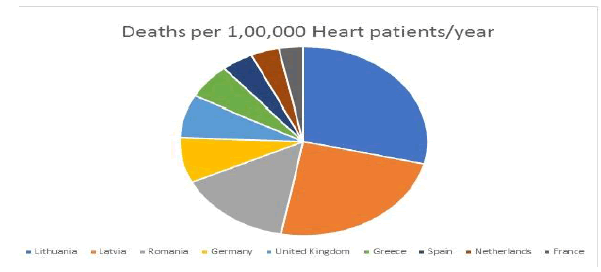
Singapore Medical Device Market is Determined by Expansion of Medical Facilities and Increased Focus on Home Healthcare Services: Ken Research
Ken Research 's study entitled 'Singapore Medical Devices Market Outlook to 2022-by Form of Medical Device (Consumables, Diagnostic Imaging, Patient Aids, Orthopedic & Prosthetics, Dental Products and Others) indicated an rise in revenue in the Singapore medical devices market at a CAGR of 11.1% by 2022. New customer-centered models such as e-commerce, home health care and DIY health ideas have begun to concentrate on foreign players. The main factors driving growth in the Singapore medical devices market were ageing population, expansion of major hospitals and clinical laboratories and technology advancements.
Singapore has the capacity to produce products and components of high quality, including some sophisticated medical devices and equipment. This has made Singapore a preferable option for medical device sourcing. The demand for medical devices in Singapore has shifted towards a positive CAGR Driven by healthcare expansion and increased demand for home care devices such as Elderly Care Monitoring Systems (home sensors, apps, wearable devices). The number of hospitals increased from 24 in 2012 to 29 in 2016, from 2,403 in 2012 to 2,961 in 2017.
The demand for medical devices has undergone numerous improvements in the regulatory process, leading to a decrease in paperwork, a shortening of the approval period and a higher number of licences issued over the past five years. This has allowed the manufacturers and distributors of medical devices to broaden their product portfolio and promote the growth of healthcare facilities. Rise in ageing population, increasing incidences of chronic diseases have made the home healthcare segment an emerging sector, for medical device manufacturers. The demand for testing, screening and tracking devices has increased because of the growing focus on preventive medicine. With high precision, the potential to minimise healthcare problems and ensure device portability has generated a large demand for tracking and testing devices. Increasing telemedicine practises in consultation, surgery, imaging and cardiology have fueled the market for advanced technological medical devices.
In Singapore, the medical device market will be fuelled by technological advancements coupled with the rising prevalence of lifestyle diseases. As Singapore is a major trading centre for importing and exporting all kinds of medical devices for re-export to third countries, more than 60% of medical devices imported into Singapore are subsequently re-exported.
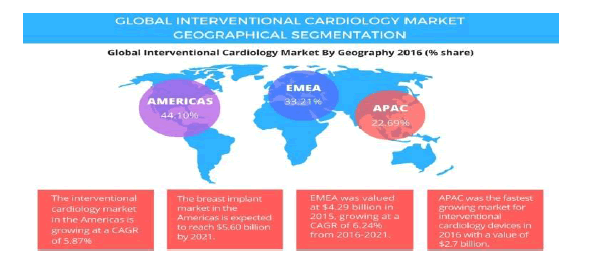
Based on the (CRM) devices market study, this market will expand at a CAGR of nearly 8 percent by 2021. By 2022 , at a CAGR of more than 10 percent, the market adoption rate of congestive heart failure drugs will rise. By the end of 2020, the systemic hypertension drug market is projected to cross more than USD 27 billion. The worldwide demand for hypertension medicines is predicted to have an impressive market value of USD 32 billion by the end of 2020. By 2021, industry analysts expect that the market will grow steadily at a CAGR of about 4 percent, according to market research on angina pectoris drugs. By 2021, through the study of the cardiac prothetic devices industry, this demand will expand steadily at a CAGR of nearly 14 percent. An overview of the global demand for cardiac monitoring indicates that by 2021 it will increase steadily at a CAGR of more than 8 percent. Over the 2016-2022 forecast period , the global cardiovascular training equipment market will grow steadily at a CAGR of more than 4 percent. By 2022, the worldwide cardiovascular diagnostic POC market is projected to hit more than USD 1.3 billion. The demand for the Global Cardiovascular Information System will grow over the 2019-2023 timeframe at a CAGR of 7.90 percent.
The global demand for interventional cardiology instruments and supplies reached a fantastic sales point of about $8.58 billion in 2018 and is expected to rise to $10.27 billion at a CAGR of 4.6 percent by 2022. The main companies in the cardio systems industry are GE Healthcare, Abbott Laboratories, Boston Scientific Corporation, Medtronic, and Johnson & Johnson.
A increase in cardiovascular diseases is driving the growth in the demand for interventional cardiology devices and equipment. Cardiovascular disorders are health problems that are associated with the blood vessels, circulatory system, and core. The rapid rise in cardiovascular diseases has become a key reason for the increase in expenditure on healthcare, which in turn has increased the demand for medical devices and further increased the growth of interventional cardiac devices. Cardiovascular diseases accounted for 17.3 million deaths in 2015 and further claims are to be increased to 23.6 million deaths by 2030, according to the prediction provided by the World Health Organization.
CVD has become the root cause of death globally and is responsible for more than 17 million annual deaths. Therefore, market research involving a discussion of various products, existing and anticipated markets, competitors and global market opportunities for diagnostic and guided interventional cardiology products, including equipment such as trans catheter angiography, has become important. Direct wire-based assessment, intravascular stenosis, intracardiac echocardiography (ICE), intravascular ultrasound (IVUS), optical coherence tomography ( OCT), and robotic-assisted surgical systems. Global revenues are forecast to rise at a compound annual growth rate ( CAGR) of 6.4 percent throughout 2016-21, growing from approximately $3,491.3 million in 2016 to an estimated $4,761.4 million in 2021. The countries / regions included in this study are the U.S., five main European markets (France , Germany, Italy, Spain and the United Kingdom), Japan and the rest of the world (combining projected sales data for all other countries).
Highlights:
- Diagnostic interventional cardiology products are less widely used in the preoperative work-up of diagnosed cardiovascular disease patients. Directing minimally invasive treatments (e.g. stenting) is the primary application of these technologies.
- Angiography devices, including cardiac X-ray systems and transcatheter devices, accounted for 59 percent of total device revenue in 2016. ICE and OCT systems revenues are expected to experience the highest growth during the forecast period.
- During the forecast era, the market for diagnostic and guided interventional cardiology devices is expected to experience moderate growth, growing to an estimated $4.8bn by 2021.
- In the United States, the demand for diagnostic and directed interventional cardiology instruments accounted for around 35% of all sales, led by five major European markets.
Universities Associated with cardiology: World Wide:
- Vrije Universiteit Amsterdam
- VU University Amsterdam
- Academic Medical Centre
- Amsterdam University of Applied Sciences
- Wittenberg University of Applied Sciences
- Tio University of Applied Sciences
- EMGOâº/Amsterdam Public Health research institute
- University of Groningen
- Netherlands Heart Institute
- University of Leiden
- Yerevan State Medical University
- Medical University of Graz
- Paracelsus Private Medical University of Salzburg
- Universiteit Utrecht
- University of Groningen
- University College Roosevelt
- Wageningen University
- In Holland University of Applied Sciences
- Saxion University of Applied Sciences
- Harvard University
- University of Oxford
- University of Cambridge
- Johns Hopkins University
- Stanford University
- Yale University
- University of California, Los Angeles
- University of Melbourne
- University of Geneva
- University of Bern
- University of St Gallen (HSG)
Industries Associated with Cardiology:
- Johnson & Johnson pharmaceutical manufacturer company
- Novartis pharmaceutical company ltd.
- Roche pharmaceutical company
- OCEAN HEALTHCARE INDUSTRIES
- CLINTON INDUSTRIES INC.
- Pfizer pharmaceutical company
- Sanofi pharmaceutical company
- Merck pharmaceutical company
- AstraZeneca pharmaceutical company
- Gilead Sciences and health care
Conference Highlights
- Pediatric Cardiology
- Heart Diagnosis
- Cardiac Surgery
- Diabetes, Obesity & Stroke
- Case Reports on Cardiology
- Cardiac and Cardiovascular Research
- Cardiac Nursing
- Angiography & Interventional Cardiology
- Hypertension
- Heart Disease & Failure
- Implantable cardioverter-defibrillator
- Catheterization and Cardiovascular Interventions
- Cardiometabolic Health- Diabetes, Obesity & Metabolism
- Acute Coronary Syndromes
- Cardio-oncology
- Geriatric Cardiology
- Heart Failure and Cardiomyopathies
- Cardiac Imaging
- Coronary Heart Diseases
- Cardiac Regeneration
- Cardiac Pharmacology
- Pulmonary Hypertension and Venous Thromboembolism
- Interventional Cardiology and Heart Surgery
- Current research on Cardiology - Future Medicine
To share your views and research, please click here to register for the Conference.
To Collaborate Scientific Professionals around the World
| Conference Date | July 21-22, 2022 | ||
| Sponsors & Exhibitors |
|
||
| Speaker Opportunity Closed | |||
| Poster Opportunity Closed | Click Here to View | ||
Useful Links
Special Issues
All accepted abstracts will be published in respective Our International Journals.
- Clinical & Experimental Cardiology
- Cardiovascular Diseases & Diagnosis
- Internal Medicine: Open Access
Abstracts will be provided with Digital Object Identifier by



